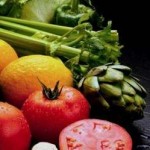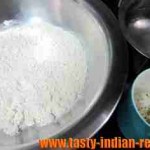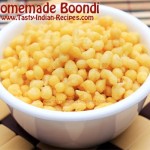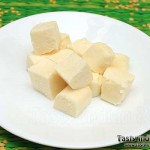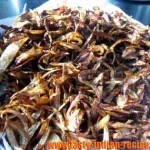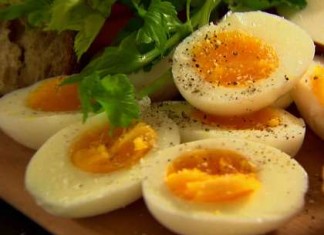Vegetables are among the healthiest foods. They are highly firmed and brimming with vitamins, minerals and other substances that our body needs for optimum performance and robust immunity on daily basis. The more healthy vegetables you eat the more you remain healthy and away from medicines and doctors.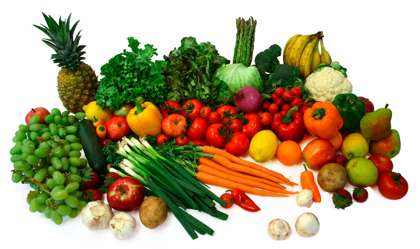
People who eat vegetables on a regular basis are having extreme lower chances and risks of many chronic diseases, including heart disease, type 2 diabetes, and some forms of cancer.
Vegetables can be cooked in several ways but still some people are not aware of the proper techniques of cooking vegetables. Although any technique of cooking is great, except the deep-frying.
Jeannie Gazzaniga-Moloo, RD, a national spokesperson for the American Dietetic Association and instructor at California State University, Sacramento said, that “I think most nutritionists would agree that any way you cook vegetables is fine, as long you eat plenty of them,”
Nutrition experts and advisory committees may quibble over some things. But there is one common advice from all of them is that Eat your vegetables.
Why do so many Americans fall short on even the minimum recommended numbers of servings? One reason may be that preparing and cooking vegetables can seem complicated and intimidating. It seems to be easy now a days, as Amy Myrdal Miller, RD, a dietitian at the Culinary Institute of America at Greystone said that “These days, convenience foods such as pre-washed greens and frozen vegetables like spinach and corn make preparation a lot easier.”
Following are some tacts and techniques through which you can find the fresh ways to entice everyone in the family to come back in just for few seconds.
>Saute Vegetables:
Sauteing is a quick and easy way to cook vegetables by using little amount of oil. This method is best suited for tendering various types of vegetables, such as asparagus, baby artichokes, snow peas, sweet peppers, onions, and mushrooms.
The word saute comes from the French verb that means “to jump.” It refers to the way foods added to a hot, lightly oiled pan tend to jump. sautéed vegetables retain their vitamins and minerals along with the taste and color.
For the best sauteing vegetables, you just need to take one tip and that is always cut the vegetables into thin bits or pieces, cook all the way quickly. Keep the pan on high heat and put the oil. Wait for few seconds until the oil starts shimmering before adding the vegetables. Always remember, the cooking time really depends on the desired tenderness.
>Stir-Frying Vegetables:
There is a slight difference between sauteing and Stir-frying vegetables. Usually stir frying is done over very high heat and the food is constantly stirred to prevent it from the burning on the hot pan and sticking in the bottom of the pan.
Wok is a preferable utensil for stir-frying, it is one of the classic utensils of Chinese cooking. But stir fry can be done in a saute pan as long as the bottom is thick enough to distribute the high heat evenly.
Stir frying the vegetables is one of the best way to cook the veggies in less oil, you just need to toss them evenly time to time to check the tenderness of vegetables.
>Boiling or Simmering Vegetables:
Boiling vegetables is a quick and easy technique. Boiled food is always recommended best and healthy. This type of food comes first in the list of diet food. Boiling the vegetables is really an interesting technique, When you want to retain the flavor and crispness of vegetables such as green beans or broccoli, you just need to wait until the water is at a full boil.Toss in the vegetables and cook them quickly, this technique is called as a blanching.
Simmering means using less water to cook the vegetables, but at a lower temperature before the water begins to boil. This slow-cooking technique is a great tip to cook dried bean, potatoes, beets and other root vegetables that requires longer periods of cooking in order to become tender.
Tip: Adding salt to boiling water enhances the flavor of vegetables and helps in quick boiling sometimes. Do not add excess salt or the vegetables becomes salty. The excess salt increases the risk of high blood pressure.
>Roasting Vegetables:
Roasting vegetables such as asparagus, squash or onions is as simple as putting them on a baking sheet, brushing some oil and popping them in a 400 degree oven. The high oven temperature of roasting cooks meat and vegetables quickly and caramelizes the sugars on the surface by creating a crunchy and sweet flavor.
Roasting helps to preserve the vitamins and minerals along with the flavors that can be lost with boiling.
Tip: Make a meal around foods that can be roasted in the oven, e.g roasted chicken or fish and roasted vegetables. Seasonings such as bay leaves, dried herbs, oregano, garlic or mixed spices that can be added for flavor.
>Steaming Vegetables:
Steamed vegetables are considered as a healthy eating for good reason. Steaming cooks vegetables without submersing them in water, so they are more likely to retain vitamins and minerals. Unlike sauteing, steaming doesn’t require oil, so it’s a great way to prepare vegetables if you’re watching calories. The best vegetables for steaming include broccoli, carrots, cauliflower, green beans, leafy greens like spinach, and other relatively tender vegetables.
Aromatic spices such as cinnamon sticks, lemongrass and ginger can be added to the steaming liquid to permeate vegetables with subtle flavor.
>Grilling Vegetables:
When the weather is warm, do the best use of garden area and grill the vegetables outside on the barbecue. Just Like the roasting, grilling also locks in flavor and caramelizes the surface of vegetables by giving them a crispy sweetness. Grilling is a terrific way to prepare corn, sweet peppers, zucchini and other squash, onions, potatoes along with the variety of other vegetables.
If you have a gas cook top, you can grill vegetables inside all year round. Hold the vegetables with tongs above the flame, turning to cook them evenly. Another option is to place vegetables on a grilling basket over the flame. Bell peppers, available most of the year, are perfect for grilling over a stove top.
>Making Vegetable-Based Sauces:
Vegetables feature in many classic sauces and spreads. A classic favorite from Spain, romesco sauce, combines roasted red peppers with almonds, hazelnuts, olive oil, and vinegar to create a flavorful sauce that can be used with fish or vegetable dishes.
Classic Italian pesto sauce is made with generous handfuls of basil blended with pine nuts, olive oil, and Parmesan cheese. To make a rich-tasting vegetarian pate, you can saute mushrooms and onions, season with Italian spices or herbs de Provence and blend in a kitchen blender.
Invest your precious time in a good food processor that helps in making vegetable-based sauces and spreads much easier.





